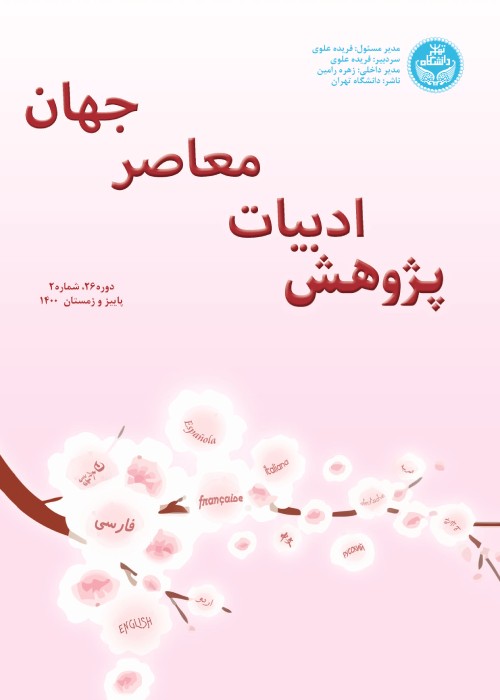Representing Trauma in Haruki Murakami's "Landscape with Flatiron"
Author(s):
Article Type:
Research/Original Article (دارای رتبه معتبر)
Abstract:
This study is concerned with interrogating the short story of "Landscape with Flatiron" by Haruki Murakami in the context of trauma theory and identifying the ways of representing the process and consequences of trauma. For Caruth trauma occurs when the traumatic event is experienced a moment too late, before the self can realize it. Indeed it is experienced, but not understood. Traumatic event is fully comprehended in connection with another place and in another time and through repetitious imposition of its memory. Trauma deviates the mechanism of experiencing and effects an incision in the self, splitting the psyche into two halves: before and after trauma. Different people show various reactions to trauma, but Žižek believes that any confrontation with traumatic events ends into the birth of posttraumatic subject. Posttraumatic subject is a new subject who is a stranger. In "Landscape with Flatiron" Murakami represents the process of trauma through symbolism and displacement. He also represents the consequence of trauma by depicting posttraumatic subjects concerned with death.
Keywords:
Language:
Persian
Published:
Research in Contemporary World Literature, Volume:27 Issue: 1, 2022
Pages:
503 to 537
magiran.com/p2468124
دانلود و مطالعه متن این مقاله با یکی از روشهای زیر امکان پذیر است:
اشتراک شخصی
با عضویت و پرداخت آنلاین حق اشتراک یکساله به مبلغ 1,390,000ريال میتوانید 70 عنوان مطلب دانلود کنید!
اشتراک سازمانی
به کتابخانه دانشگاه یا محل کار خود پیشنهاد کنید تا اشتراک سازمانی این پایگاه را برای دسترسی نامحدود همه کاربران به متن مطالب تهیه نمایند!
توجه!
- حق عضویت دریافتی صرف حمایت از نشریات عضو و نگهداری، تکمیل و توسعه مگیران میشود.
- پرداخت حق اشتراک و دانلود مقالات اجازه بازنشر آن در سایر رسانههای چاپی و دیجیتال را به کاربر نمیدهد.
In order to view content subscription is required
Personal subscription
Subscribe magiran.com for 70 € euros via PayPal and download 70 articles during a year.
Organization subscription
Please contact us to subscribe your university or library for unlimited access!



